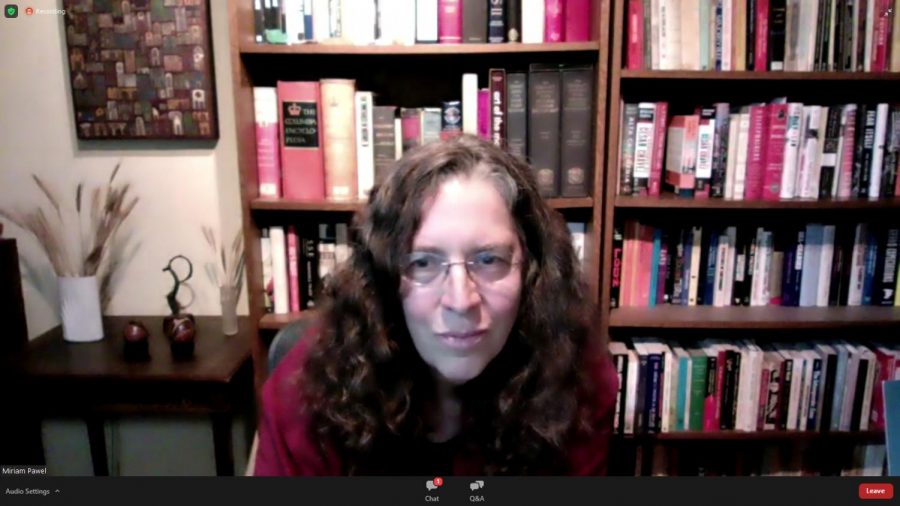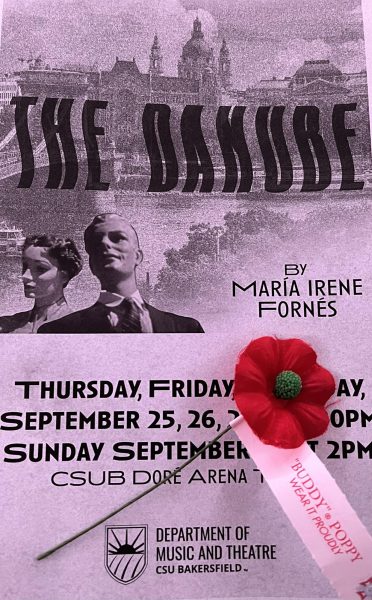Author Miriam Pawel discusses the legacy of the Governors Browns on criminal justice reform
November 13, 2020
Utilizing the Kegley Institute of Ethics’ (KIE) “Humanities Beyond Bars” grant, the CSU Bakersfield’s KIE worked with the Public History Institute to invite author Miriam Pawel on Nov. 12 to speak to Runners via Zoom about the impact of Governors Pat and Jerry Brown on the justice system.
Michael Burrough, Director of the KIE and Associate Professor of Philosophy, kicked off the event by welcoming moderator Miriam Raub Vivian, Director of the Public History Institute and History Chair.
Vivian gave a brief introduction, providing background information on Pawel and her book “The Browns of California.”
To begin her presentation, Pawel described former Governor Pat Brown’s early life and political career. Pawel described how Brown climbed the political ladder, drawing mixed responses from Californians for his policy ideas.
“I would make the case that Pat Brown was our first progressive district attorney,” Pawel said.
Pawel said that it was Pat Brown that appointed the very judges that overturned California’s ban on interracial marriage, explaining that it violated American’s rights.
Similarly, Pawel said Pat Brown spent his career working for controversial criminal justice reform. He laid part of the foundation for the progressive platform that his son, Jerry Brown, used to continue to create and pass further legislation for justice reform.
Jerry Brown started as the Secretary of State in 1971, then went on to become governor in 1975. During his time in office, he drew mixed feedback after he spoke out against the death penalty.
“He had qualms on the death penalty when he was attorney general and asked for a moratorium,” Pawel said.
According to Pawel, it was also Jerry Brown that campaigned to change the legal definition of murder. By changing the definition for murder, past and present murder convictions were able to be challenged and receive a new sentence.
“He ultimately comes to the conclusion, not just because it was wrong on moral grounds, but [the death penalty] did not deter crime,” Pawel said.
However, Jerry Brown’s campaign for justice wasn’t limited to stopping the death penalty.
Pawel explained that Jerry Brown also frequently fought more diverse representation in government. According to Pawel, it stemmed from the idea that the government “should look like those it governs.”
These controversial moves took Jerry Brown from the most popular California governor to one of the least popular, Pawel said.
Pawel then provided information about how Jerry Brown spent his gaps between terms as the Governor of California, as he left office in 1983 and did not return until 2011. According to Pawel, he spent that time hosting a radio talk show, running a commune, then becoming the mayor of Oakland and the Attorney General of California.
After the conclusion of Pawel’s lecture, Runners were encouraged to participate in the Q&A. To prevent inappropriate messages, participants were only able to submit their questions directly to the event moderators. The questions were then read by Vivian.
During the Q&A, Runners concluded the discussion by posing questions pertaining to Jerry Brown’s criminal justice reform and why he chose to take such a strong stance against the death penalty.
Ultimately, Pawel believes it may come down to compassion and understanding, as Brown had commented that someone “should not be reduced to their crime.”
“The statistic […] is that half the people in the United States have a relative of loved one in the prison system,” Pawel said.







